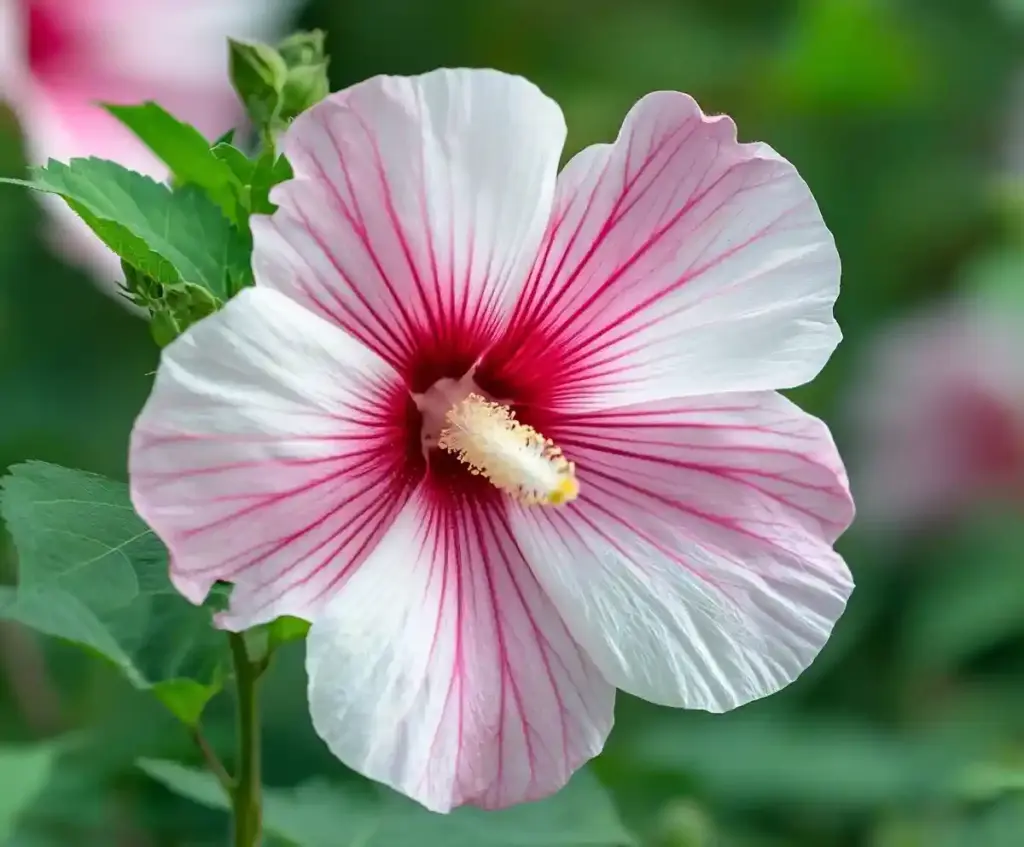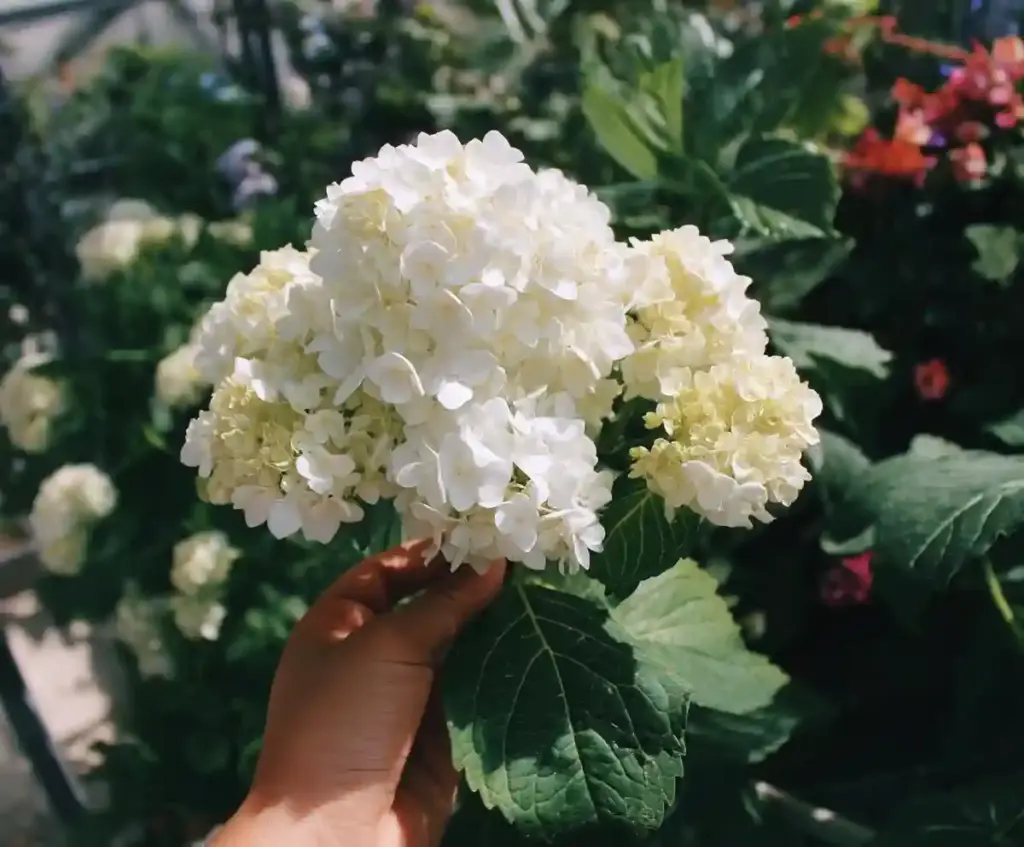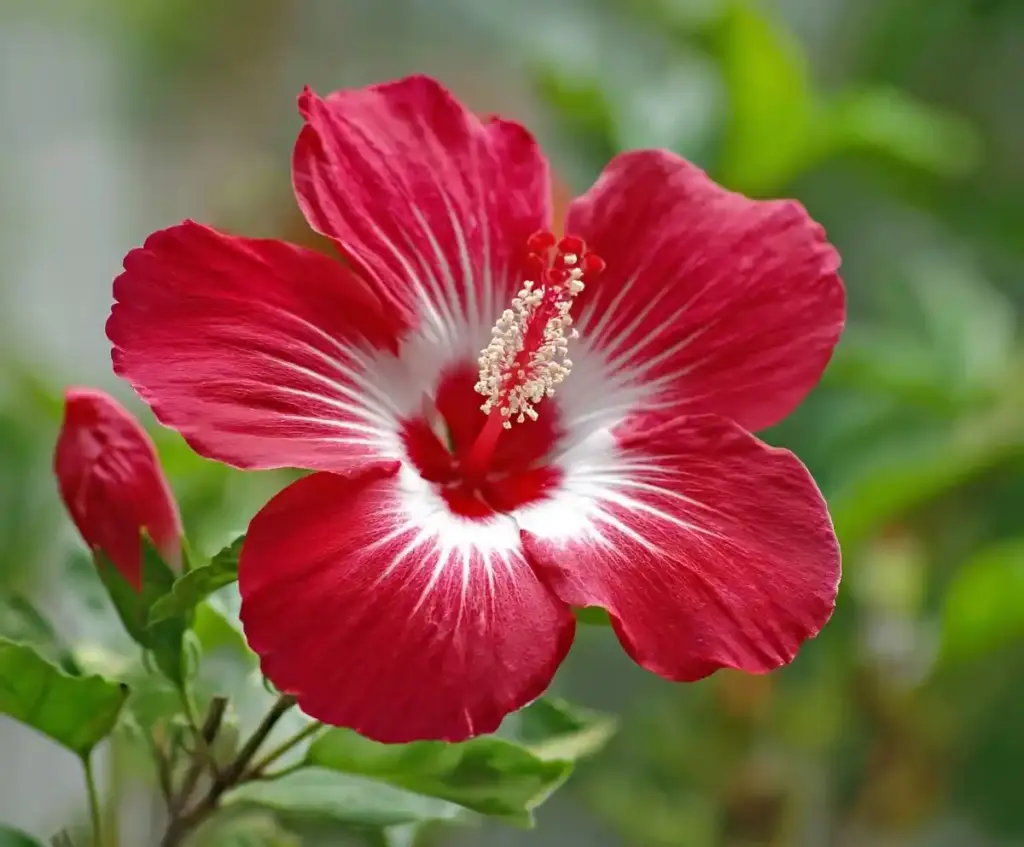Cosmos flowers bring effortless charm to gardens with their bright, daisy-like petals and feathery foliage. Native to Mexico, these sun-loving annuals are perfect for borders, pollinator patches, and fresh-cut bouquets. With minimal care, cosmos will reward you with continuous blooms from early summer until the first frost.
Whether you’re planting in containers or letting them naturalize along fences, cosmos flowers are ideal for beginners and seasoned gardeners alike. They thrive in poor soil, love full sun, and ask for very little in return—except space to shine.
Table of Contents
Why You Should Grow Cosmos Flowers
If you’re looking for a low-effort, high-impact flower, cosmos flowers are a perfect choice. They bloom endlessly, attract pollinators, and thrive in tough conditions.
🌼 Top Benefits of Growing Cosmos Flowers
- Low-Maintenance: Tolerate poor soil, drought, and garden neglect
- Pollinator-Friendly: Attract bees, butterflies, and even hummingbirds
- Long Blooming Period: Flower from early summer until frost
- Versatile: Excellent for borders, cottage gardens, containers, and cutting
- Cut-and-Come-Again: The more you harvest, the more they bloom
Whether you’re filling a sunny flowerbed or growing your own bouquet station, cosmos flowers add beauty and biodiversity to your garden.
How to Plant Cosmos Flowers from Seed
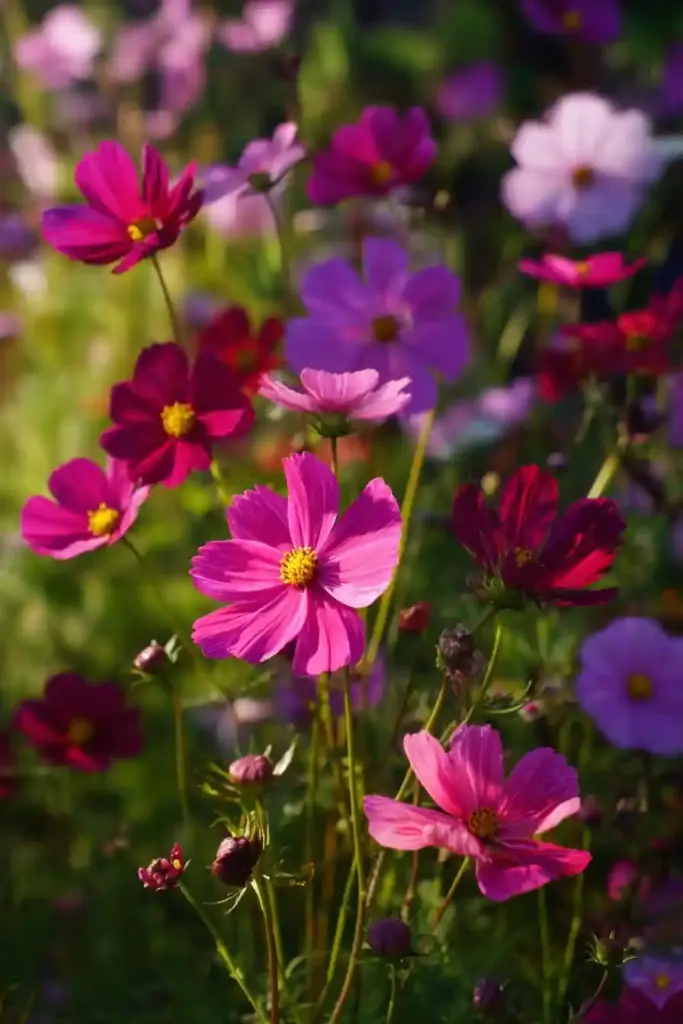
Cosmos flowers are among the easiest annuals to grow from seed—no fancy tools or skills required. Whether you start indoors or sow directly in your garden, they sprout quickly and bloom for months.
🌱 Starting Cosmos from Seed
➤ Direct Sowing Outdoors
- When: After the last frost date in your area
- Where: Choose a sunny spot with well-draining soil
- How: Scatter seeds and cover lightly with ¼ inch of soil
- Spacing: Thin to 12–18 inches apart once seedlings appear
- Germination: 7–21 days at ~70°F
➤ Starting Indoors
- When: 4–6 weeks before your final frost
- How: Use seed trays with light potting mix, keep warm and moist
- Transplanting: Move outdoors after hardening off when soil warms
Tip: Cosmos don’t love being transplanted. If starting indoors, use biodegradable pots to reduce root disturbance.
Sunlight, Soil, and Watering Needs for Cosmos
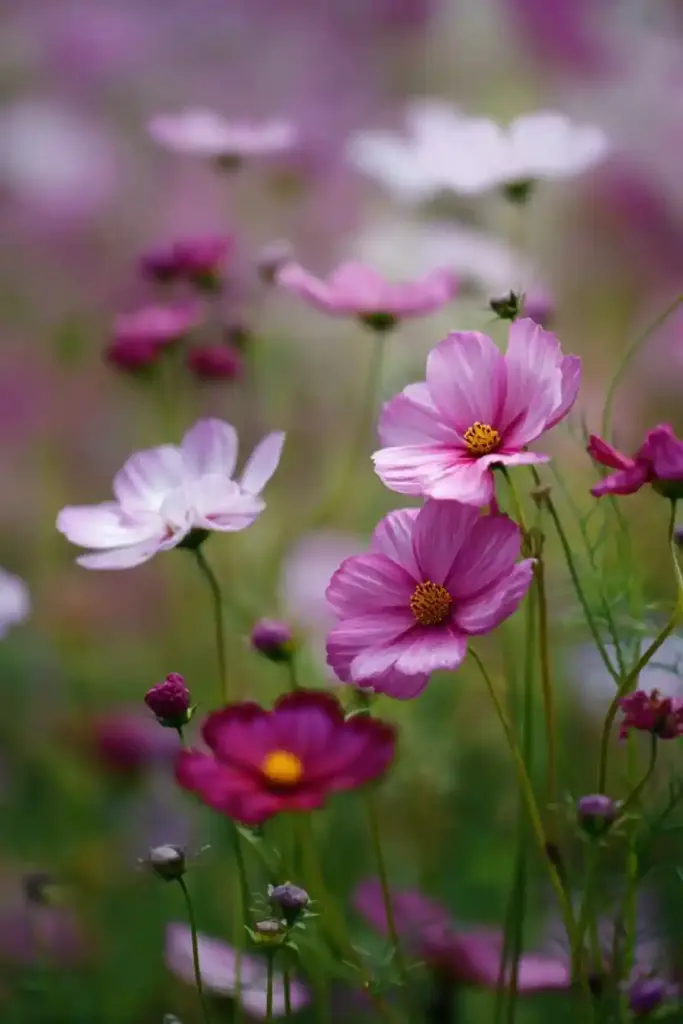
To grow healthy, flower-filled cosmos plants, you don’t need rich soil or constant watering—but sunlight is a must.
☀️ Sunlight Requirements
- Needs: At least 6 hours of direct sunlight per day
- Less Sun = Fewer Blooms: In partial shade, plants may grow tall and leggy with fewer flowers
Plant cosmos in the sunniest spot in your garden for maximum blooms.
🌱 Soil Conditions
- Best Soil: Loose, well-draining soil
- Soil Type: Poor to moderately fertile works best—avoid rich soil, which encourages leafy growth over flowers
- Drainage Tip: If soil is heavy or clay-rich, amend with compost or sand for better drainage
💧 Watering Guidelines
- How Often: Deep watering once or twice a week is better than daily splashes
- Drought Tolerant: Once established, cosmos flowers require little watering
- Avoid: Overhead watering—it encourages fungal issues
Tip: Let the soil dry out between waterings. Cosmos don’t like wet feet.
Cosmos Care: Pruning, Feeding, and Deadheading
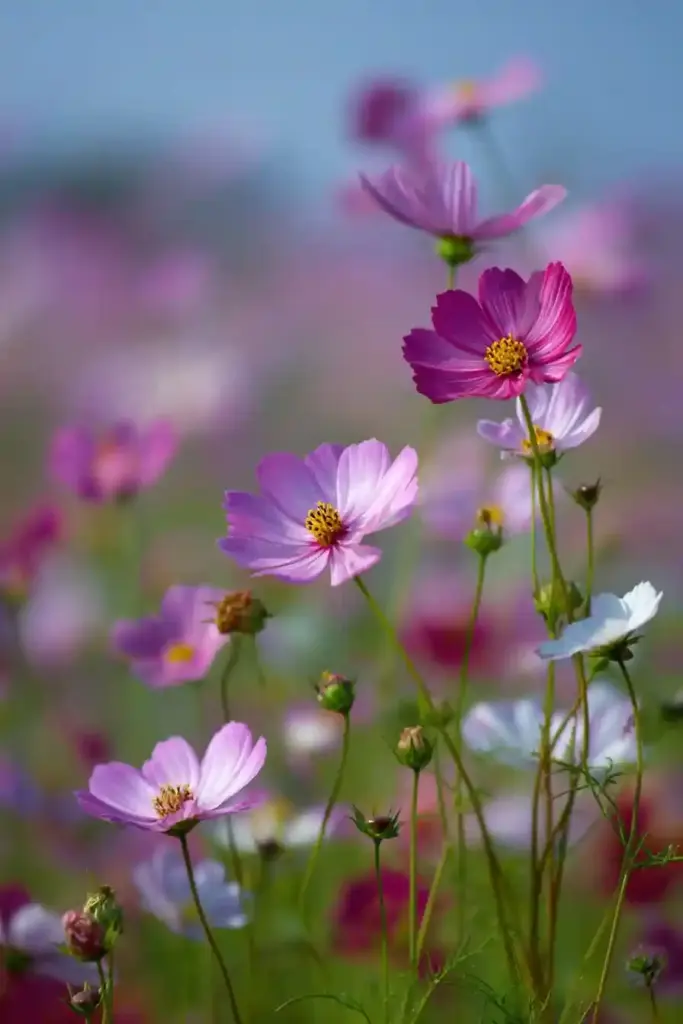
Once your cosmos flowers are growing, keeping them in bloom is as simple as a few light care steps. Skip the fertilizer, trim smartly, and you’ll enjoy continuous color.
✂️ Pruning & Pinching
- Pinch Seedlings: When plants reach 8–12 inches tall, pinch the top growth to encourage bushy branching.
- Trim Tall Stems: If plants get too leggy, cut back by one-third to rejuvenate growth and stabilize the plant.
🌸 Deadheading for Continuous Blooms
- How: Snip spent blooms back to the nearest leaf node.
- Why: Regular deadheading encourages more buds and keeps the plant from going to seed too early.
The more you cut, the more they bloom—cosmos are truly cut-and-come-again stars.
🧪 Fertilizer Needs
- Skip It: Cosmos thrive without feeding.
- Too Much Nitrogen: Encourages lush foliage with fewer flowers.
- If Needed: Use a low-nitrogen flower fertilizer sparingly in early growth stages only.
Common Problems and How to Solve Them
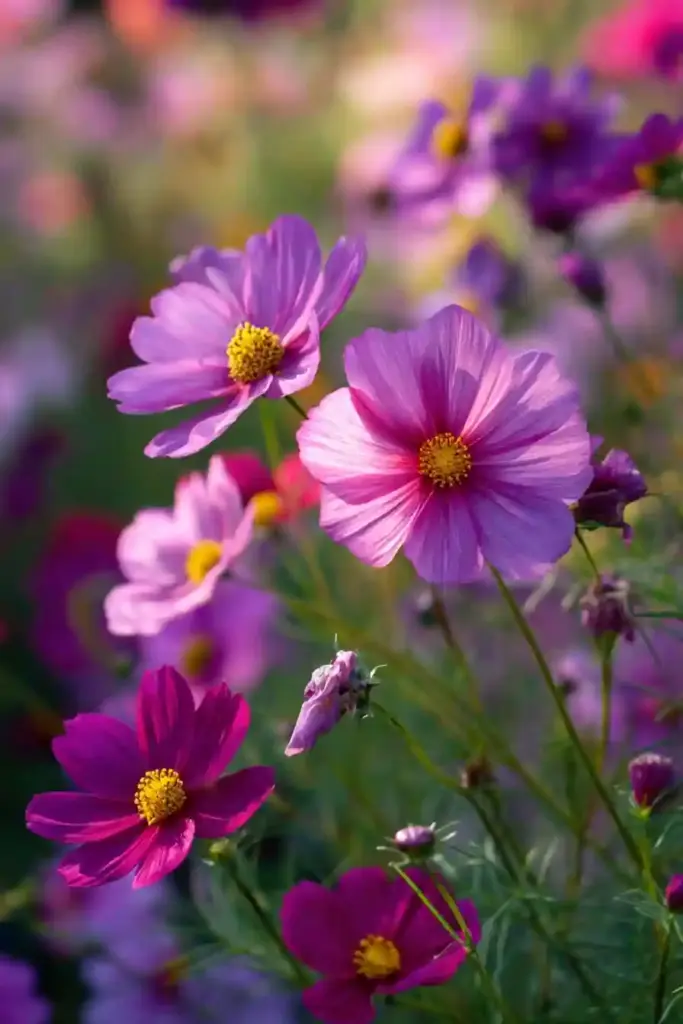
Cosmos flowers are generally low-maintenance, but they can occasionally run into issues. Most problems are easy to fix with a little attention to spacing, airflow, and pests.
🐛 Pests
- Aphids & Thrips: Look for sticky residue or distorted leaves
Fix: Spray off with a strong stream of water or use neem oil
🍄 Diseases
- Powdery Mildew: White, powdery coating on leaves
Fix: Improve air circulation, avoid wetting leaves, and prune crowded stems - Fusarium Wilt: Yellowing and wilting from the base up
Fix: Remove infected plants; avoid replanting cosmos in the same soil next season
🌱 Leggy Growth
- Cause: Too little light or overly rich soil
Fix: Move to a sunnier spot and avoid fertilizing. Stake tall plants if needed.
Tip: Always space cosmos 12–18 inches apart to prevent fungal issues and improve airflow.
Harvesting Cosmos Flowers for Bouquets
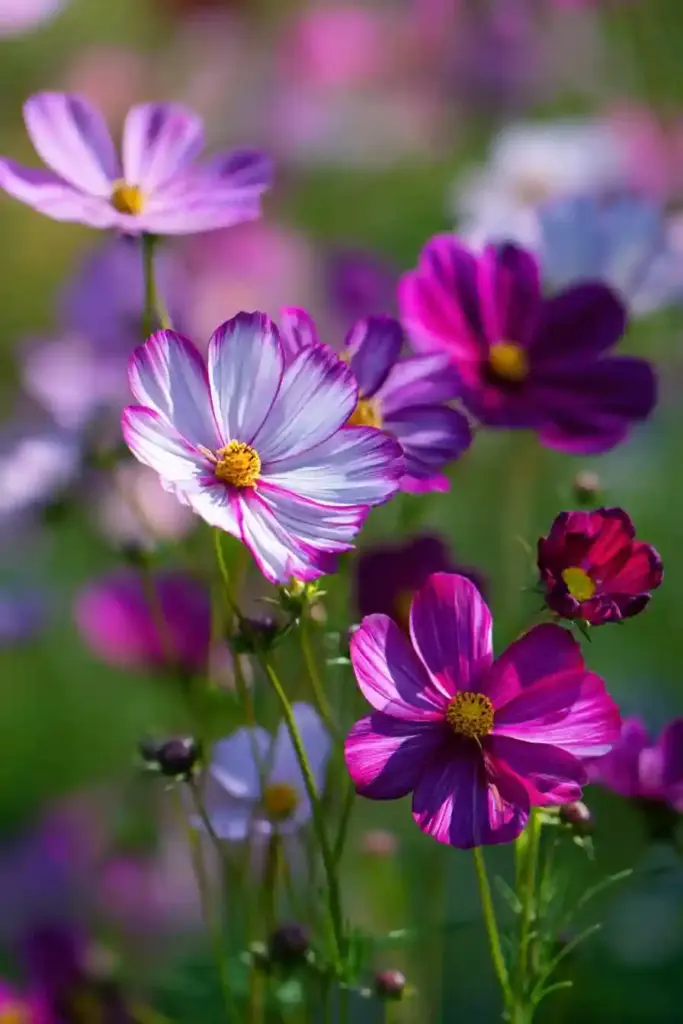
If you’re growing cosmos flowers for arrangements, you’re in luck—they make excellent cut flowers with long vase life and charming, airy appeal.
✂️ When to Harvest
- Best Time: Cut stems when buds are swollen but not fully open
- Why: Flowers will continue to open in the vase and last longer
Fully open blooms look pretty but fade faster indoors.
🧺 How to Cut for Longer Vase Life
- Use sharp, clean scissors or pruners
- Cut in the morning when flowers are most hydrated
- Place stems immediately in cool water
🧪 Vase Life & Storage Tips
- Vase Life: 4–7 days with fresh water and flower food
- Location: Keep bouquets out of direct sun and heat
- Change water daily and recut stems every 2 days for best results
Pro Tip: Cosmos add movement and elegance to mixed bouquets—pair with zinnias, snapdragons, or herbs for variety.
Popular Cosmos Flower Varieties to Try
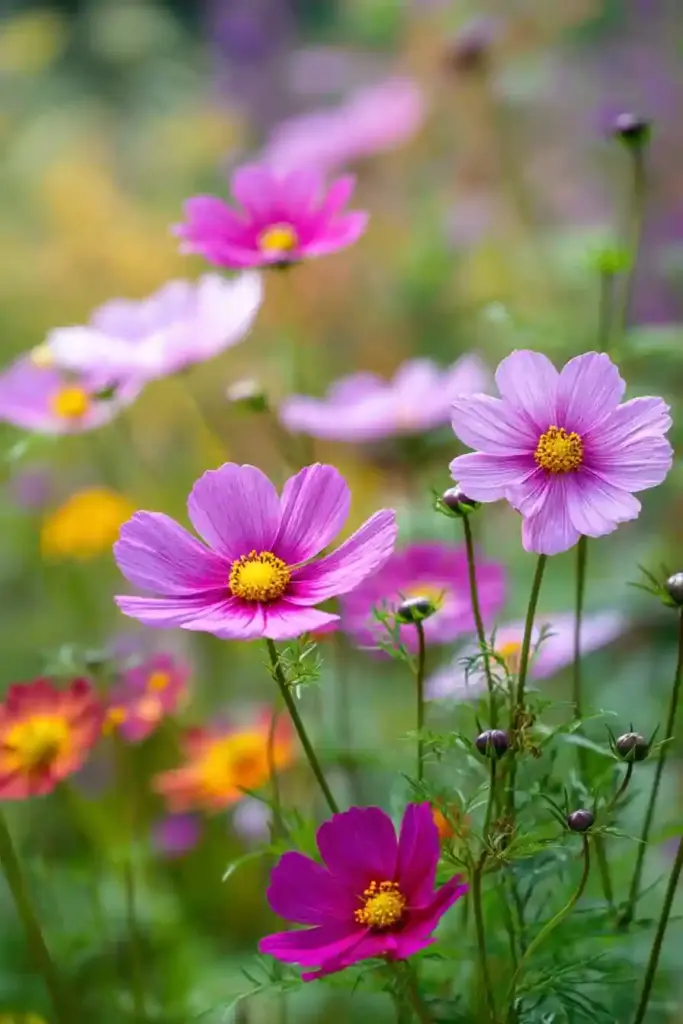
With so many beautiful types of cosmos flowers, it’s easy to find a variety that fits your garden’s style—whether you love pastels, bold colors, or unique shapes.
🌸 Top Cosmos Varieties
| Variety | Height | Color | Special Traits |
|---|---|---|---|
| ‘Sea Shells’ | 3–5 ft | Pink, white, red | Fluted, tubular petals add texture |
| ‘Purity’ | 3–4 ft | Pure white | Elegant and classic for cutting |
| ‘Bright Lights’ | 2–3 ft | Orange, yellow, red | Heat-tolerant and vibrant |
| ‘Chocolate’ | 2–3 ft | Deep red | Unique chocolate scent; technically perennial in warm zones |
Mix varieties for a longer bloom period, diverse heights, and bold color combos in your garden or bouquets.
Final Thoughts
If you’re looking for a flower that delivers beauty without the fuss, cosmos flowers are it. These sun-loving, pollinator-attracting annuals thrive in less-than-perfect conditions and reward you with cheerful blooms all summer long.
Whether you’re planting them for bees, bouquets, or the joy of a self-seeding, low-maintenance flowerbed, cosmos are a true garden staple. With just a bit of deadheading and smart placement, you’ll enjoy season-long color with minimal work.
From beginner gardeners to expert growers, cosmos flowers never disappoint. Plant once—and you might just have flowers forever.
🌿 Love gardening inspiration? Follow me on Pinterest for bold plant ideas, tips, and seasonal color!
More Posts
